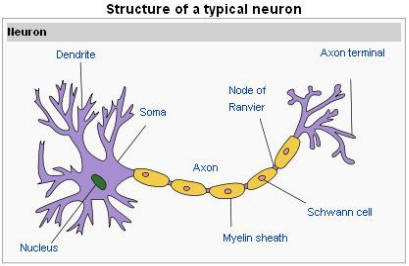CIDPUSA.org Autoimmune diseases
Sat, 31 May 2008 17:55:07
CIDP Variants
return to first page of variants Neurology. 1997 Feb;48(2):321-8.
Neurology. 1997 Feb;48(2):321-8.Chronic inflammatory demyelinating polyneuropathy: clinical features and response to treatment in 67 consecutive patients with and without a monoclonal gammopathy.
Gorson KC, Allam G, Ropper AH.
Neurology Service, St. Elizabeth's Medical Center, Boston, MA 02135, USA.
We report the clinical and EMG details of 67 consecutive patients with strictly defined chronic inflammatory demyelinating polyneuropathy (CIDP) during a 4-year period and compare responses to treatment in patients with idiopathic CIDP (CIDP-I) and CIDP with monoclonal gammopathy of uncertain significance (CIDP-MGUS). Patients were examined an average of 28 months after first symptoms. There were several variant presentations that still conformed to the clinical and electrophysiologic definitions of CIDP, including a
Pure motor syndrome (10%),
Pure Sensory
The pure sensory form of CIDP is characterized clinically by symptoms and signs consistent with large fiber sensory dysfunction, including balance
problems, pain, paresthesias, and dysesthesias. Symptoms may start anywhere in the body except in a length-dependent fashion (which would be more consistent
with the distal variant) [28]. (See 'Distal and sensory predominant' below.)
There is no clinical weakness or autonomic dysfunction, and
electrodiagnostic studies show no motor conduction abnormality in this variant [16]. If nerve conduction studies demonstrate significant motor conduction
slowing and other demyelinating features, the subtype is called sensory predominant CIDP
Sensory ataxic variant (12%),
Proximal
(polyradiculopathy) - A proximal variant of CIDP consisting of inflammatory demyelination confined to dorsal (sensory) nerve roots has been reported
[44,45]. This variant, referred to as "chronic immune sensory polyradiculopathy"
(CISP), presents clinically with a symmetric sensory ataxia with marked vibration and proprioceptive deficits, indicative of large fiber sensory
dysfunction.
Because the disease process spares peripheral nerve myelin distal to the nerve roots (in contrast with sensory-predominant CIDP and DADS),
sensory and motor nerve conduction studies are normal, and additional studies are crucial to making the diagnosis. Evidence of dorsal nerve root involvement
is demonstrated by enlarged and enhancing nerve roots on magnetic resonance imaging (MRI), abnormal somatosensory evoked potentials (SSEPs), and elevated cerebrospinal fluid (CSF) protein.
Mononeuritis multiplex pattern (9%),
Paraparetic pattern (4%),
Relapsing acute Guillain-Barre syndrome (16%).
Pain was more frequent than in previous studies (42%).
Conduction block was the commonest EMG abnormality (detected in at least one nerve in 73% of patients),
Pure demyelinating neuropathy 31% had a and the majority had some degree of axonal change.
Focal variant.
The focal form of CIDP is an uncommon presentation that features sensorimotor deficits typically isolated to the brachial or lumbosacral plexus.
Although CIDP is a primarily demyelinating disorder, some degree of axonal degeneration is usually present as well.
M.A.D.S.A.M.
MADSAM or (Multifocal acquired demylinating sensory & motor neuropathy, is a painless, demyelinating, mononeuritis multiplex (multiple single nerves involved), and is themost frequently encountered variant of CIDP of CIDP. The distinct nature of MADSAM pathology is that the brunt of the macrophage-mediated demyelination is multifocal and distributed mainly in mid-limb or proximal nerve segments.
MADSAM should be suspected in patients who have weakness and loss of sensation in primarily one arm or leg which progresses slowly over several months to years. CSF protein is elevated in up to 82% of patients with MADSAM neuropathy. MADSAM neuropathy shows conduction block, temporal dispersion, prolonged distal latencies, slow conduction velocities and delayed or absent F-waves in one or more motor nerves
D.A.D.S.
Distal-acquired demyelinating symmetric neuropathy (DADS; or distal CIDP) refers to a distal and sensory-predominant variant of CIDP, which is usually more slowly progressive than typical CIDP.. A man can present with gait disturbance owing to weakness in both legs. Nerve conduction studies show demyelinating sensorimotor polyneuropathy, and laboratory studies demonstrated anti-GM1 and anti-GD1b IgG antibodies. Patients typically present with length-dependent, symmetric sensory or sensorimotor dysfunction in the lower extremities with sparing of proximal limbs, trunk, and face . Involvement of the upper limbs may occur later (eg, more than one year after disease onset). Additional features in some patients include ataxia, neuropathic pain, cramps, fatigue, autonomic symptoms, and tremor. As in other variants of CIDP, reflexes are typically reduced.
M.A.M.A.
Multifocal acquired motor axonopathy (MAMA). Katz and colleagues have proposed a separate entity known as multifocal acquired motor axonopathy (or MAMA neuropathy) to describe those patients with pure motor neuropathy without electrophysiologic conduction block or demyelination.
Pure axonal pattern is seen on NCV testing. Elevated serum ganglioside antibody levels,most frequently anti-GD1a antibodies, are present. MAMA typically begins as weakness in the hands and arms, although it can also sometimes develop first in the feet or legs. Over time, the weakness can progress or worsen; however, unlike ALS, MAMA progresses slowly and does not typically result in shortened life span, although it can lead to significant disability. MAMA occurs more often in men than in women.
C.A.N.O.M.A.D.
CANOMAD (chronic ataxic neuropathy, ophthalmoplegia, [M] paraprotein (IgM), agglutinins cold, disialosyl antibodies) is another rare ataxic variant with a variable degrees of ophthalmoparesis, gait and limb ataxia. Less commonly the facial and trigeminal nerves were affected. One case presented only with limb paresthesia and bulbar dysfunction. The course is slowly progressive with relapses in ocular, sensory, bulbar or motor symptoms. One had a respiratory relapse requiring temporary mechanically assisted ventilation. Some degree of demyelination on nerve conduction studies is ultimately present .links CIDPUSA.ORG
- Small Fiber neuropathy
- B-12 deficiency
- neurological effects of CIDP
- Nerve Fiber types
- CIDP-EMG
- Multi Focal Motor neuropathy
- Lewis Summer
- Tips for CIDP
- Plasmapheresis
- CIDP-INFO
- CIDP-Rituxan
- CIDP-GBS-Handbook
- CIDP-family issue
- CIDP-Cyclosporin
- Polyneuropathy
- CIDP-GBS children
- Peripheral Neuropathy
- ALS & CIDP
- alcoholic poly neuropathy
- IVIg, Home to IVIg